Wildlifing: The process of creating new habitat for wildlife through such actions as revegetation and regeneration works or the installation of nesting boxes, wildlife friendly fences, even reliable water sources creating habitat, food sources, and assisting the movement of our wildlife.
Other wildlifing actions include bringing awareness and education to urban residents of the needs of wildlife in their area, which may lead to changes in habits such as keeping our pets away from wildlife.
Wildlifing in an urban setting is crucial for the long-term survival of our wildlife from our charismatic koalas, to our possums and gliders and down to our lizards, frogs, bees, butterflies and other insects.
Wildlife Infrastructure
Koala Connectors is the first stage of the larger Urban Green pilot project. The Urban Green project is to encourage urban residents to see themselves not so much as property owners but as environmental stewards.
Our motto is “Wildlife conservation begins at home”.
By starting literally in our own backyard with wildlife conservation it has the effect of empowering individuals to what they can do to help our struggling wildlife.
Koala Connectors
Koala Connectors is literally about building the infrastructure of habitat, food sources and wildlife movement through an area. Think of these big trees as being the “superhighways” or a network of road and movement links specifically for wildlife. Koalas are literally the “canaries in the coalmine” of the health of an environment and being charismatic creatures, they became the ideal species to introduce residents of River Downs to the big vision.
You could almost say that koalas are the gateway species opening up land and resources to be created and installed for other species.
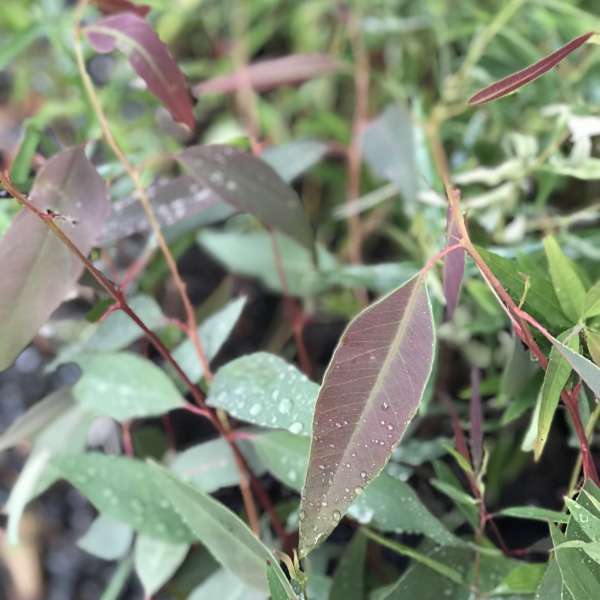
It is one thing to give a resident a tree to plant, and something very different to plant a shared vision in their heart and mind.
Building A Vision
It is one thing to give a resident a koala-food tree, and it is a totally different thing to spend time with them on their property and paint a vision that we can all share,
We had this opportunity with River Downs resident Alison Freeburn at the beginning of October 2020, which was national Save the Koala month. She invited me to see her property and a stand of eucalypts at the back of her yard. While the rest of her property was lush and green, this sloping section was dry and the ground hard. Rains would wash all the debris down into the rest of her yard and with this in mind I provided her with suggestions to assist her with rainwater run off and create an attractive area.
Wildlifing In Action
I provided Alison with a bunch of koala-food trees to plant in this area and instructions on how to plant them. When I returned a couple of weeks later, I was really excited to see what and her husband had done.
They had followed the instructions and dug deep holes for the plants. Well ‘dug’ is probably not the right word. They needed to use a jackhammer as the ground was that hard and dry. They mixed gypsum to break up the soil and good quality native garden soil together with creating a berm to capture rainwater surface run-off to help keep the plant moist. With having chickens, they went a step further and installed some ingenius tree guards from old milk crates.
Wildlife High-Rise Apartments
On my second visit I was even more blown away as Alison had contacted Habi-Tec. Habi-Tec are conservation arborists. Alison had a couple of trees that needed looking at. One was leaning and threatening to topple over. The other was a dead tree. Habi-tec was going to create hollows in the dead tree and remove the dangerous leaning tree but leave the wood chips so that Alison could use them to create mulch and compost.
Alison was well onto the big vision and had asked them to install a series of nest boxes for possums, gliders and birds – creating safe “wildlife high-rise apartments”.
Not only was Alison and her husband looking at ways to provide habitat for koalas but also other wildlife.
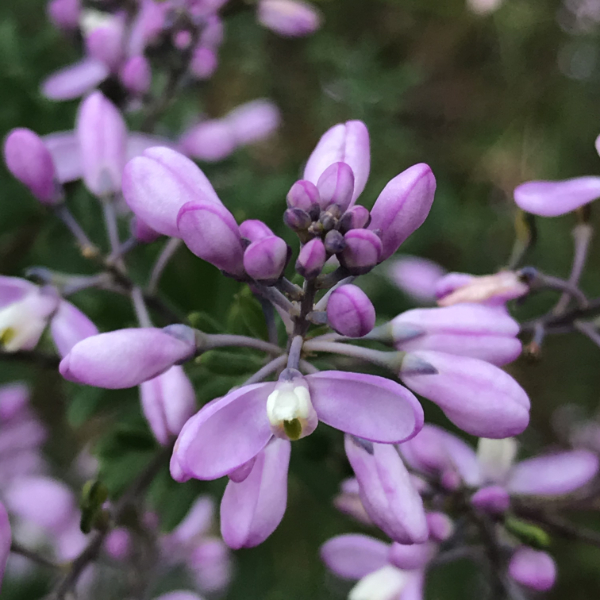
A great way to build backyard biodiversity and beautify your property is to create a native plant garden using species endemic or local to your area. Your resident wildlife will love you for it.
The Understory
Now that the main infrastructure had been installed – the koala-food trees will in time grow tall and the nest boxes will begin immediately to provide homes for wildlife, the next thing to look at was the understory vegetation.
Currently the sloping ground, as discussed, is hard, dry and bare. To be able to create healthy wildlife habitat it starts with soil health. I had made recommendations to Alison for her and her husband to construct a series of swales to slow down the surface rain-water and capture it so that it could be used to nourish plants.
Plant health is really soil deep.
It is important that we begin to re-think our backyards and where we live. Living in Australia, if we choose to do so, we have the opportunity to create stunning gardens that also cater for all the area’s residents. We need to get out of heads notions of ‘order’ and embrace the ‘naturalness’ of native plant gardens.
Endemic Plant Species
We also provided her with a list of suitable local native plants that could be grown on this sloping land and which would provide food sources and habitat for numerous wildlife species. These ground covers, shrubs and small trees will also create vibrant colour as they come into bloom at various times of the year.
By building the native plant biodiversity it will provide a wildlife larder.
Biodiversity Builders
With a clear vision, Alison and her family are truly inspirational. It is one thing to want to do something and quite another to get out there and do what needs to be done.
I am truly humbled by their efforts to care for all of River Downs residents in creating a sanctuary for wildlife to thrive. They are incredible examples of how we can build biodiversity in our backyards and suburbs, making us powerful allies in the solutions to stemming species extinctions in places where we live.

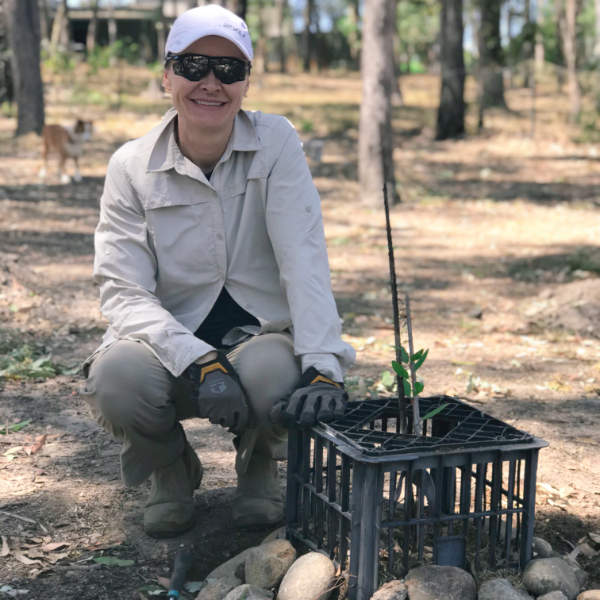
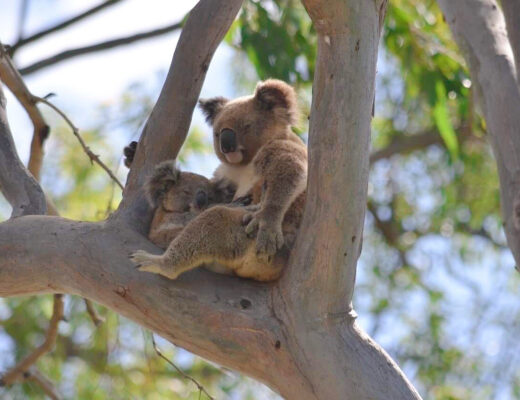
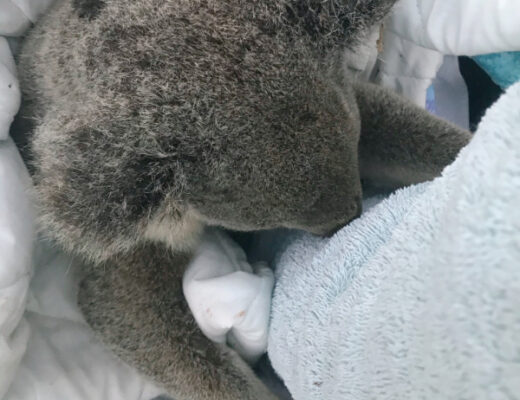
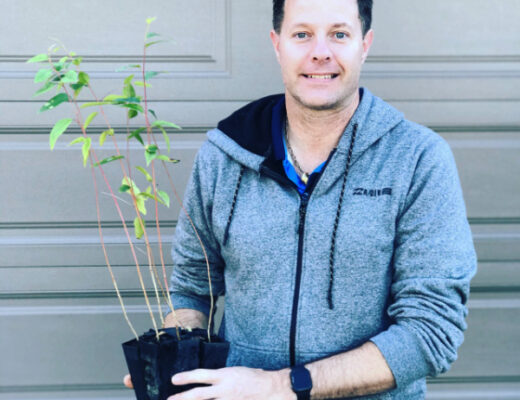
No Comments